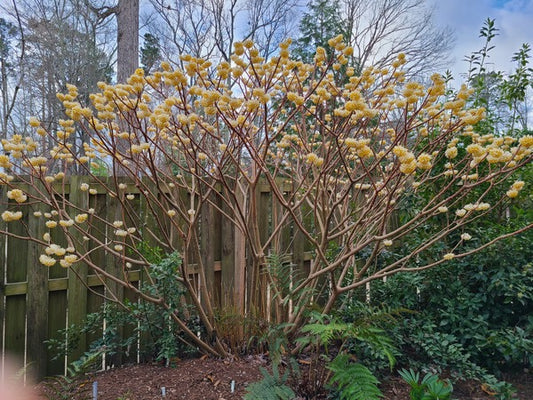Edgeworthia produces fragrant, butterfly-attracting flowers in the winter and early spring. The small, yellow, strongly fragrant, pendant flowers hang in clusters from the bare branch tips from February to April.
-
Edgeworthia chrysantha 'Snow Cream'
Item #: 2246
Zones: 7b to 10b, possibly colder
Dormancy: Winter
Height: 96" tall
Culture: Part Sun to Shade
Origin: China
Pot Size: 3.5" pot (24 fl. oz/0.7 L)
Regular price $32.00Regular priceUnit price per
More Information About Edgeworthia
The genus Edgeworthia is quite small, containing only 4 Asian species, if you agree with the taxonomists and lump Edgeworthia chrysantha (tetraploid) and Edgeworthia papyrifera (diploid) together.
Edgeworthia plants are woody shrubs with thick, spreading branches covered with a smooth burgundy bark that is peeled off and used by some Asian cultures as paper. Like its botanical cousin daphne, edgeworthia produces extremely fragrant, butterfly attracting flowers in the winter and early spring. The small, yellow, strongly fragrant, pendant flowers hang in hemispherical clusters from the bare branch tips from February to April.
Edgeworthia Growing Conditions
Although it is fairly flexible as to its growing conditions, edgeworthia has the best form and is healthiest in full to part sun. You can grow edgeworthia as you would a daphne, in well-amended, well-drained soils. Edgeworthia will naturally grow as a multi-stemmed shrub, but looks best when pruned into a single-trunked mini-tree. When you are ready to buy an edgeworthia for your garden, check out our edgeworthias for sale.




